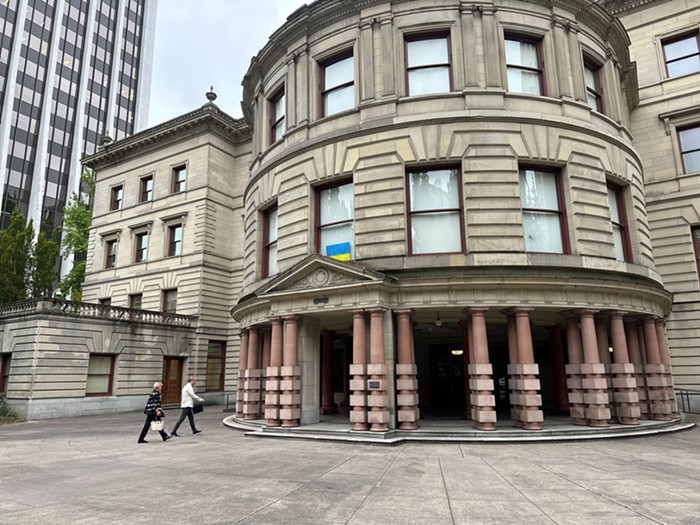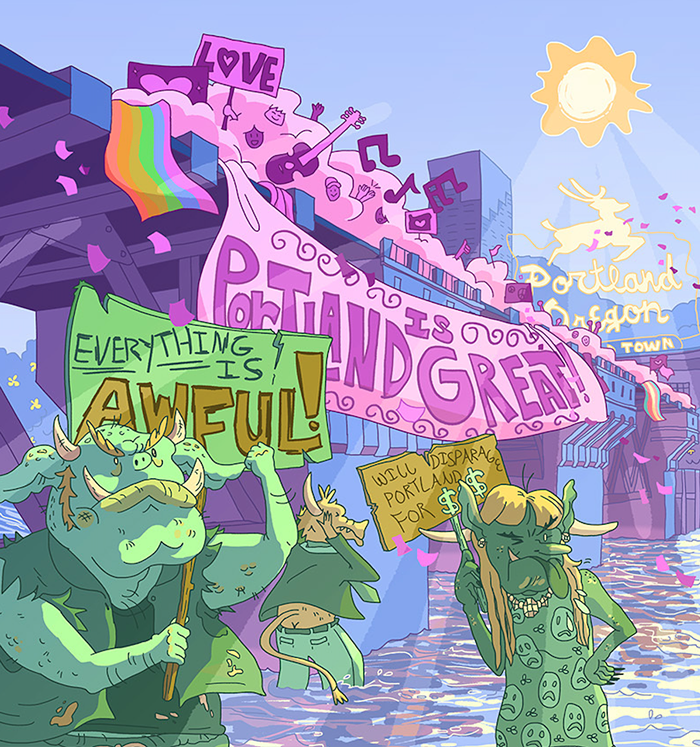Orthosentric
New Sculptures by Gilles Foisy
Butters Gallery, 248-9378 Through Feb 24
In an impressive solo debut at Butters Gallery, Portland sculptor Gilles Foisy constructs a forest of unique forms. Each piece is built from a skeleton constructed from organic materials, such as tree limbs, stones, and gourds. Foisy then conceals these elements underneath a taut skin of Manila rope. The abstract forms take on a mummified appearance, inviting the viewer to unravel the mystery that lies beneath.
"Big Bang Boom" is built from stones and a large tree segment wrapped meticulously in the brown twine. The form rests horizontally on the floor. The scale and shape of the abstract piece invite a comparison to the human form. The shapes of each limb mimics the bent knee and outstretched leg of a reclining nude. It is an abstract notion, but historical comparisons do surface: Traces of the reclining pose in Edouard Manet's "Olympia" and Titian's "Venus of Urbino" are oddly present in the form.
In "Say What" Foisy unveils a creature from another part of the animal kingdom. He constructs a life-sized, serpent-like form. Manila rope covers an assemblage of stones and a tree fragment. The lumpy result resembles a serpent in the process of digesting a recent kill. In this piece Foisy leaves a portion of the material exposed; One end of the serpent is revealed. A bare, bulbous-shaped piece of wood emerges from the twine cloak. Natural indents in the wood become the eye sockets, nostrils, and mouth of the creature. By fraying the twine at the opposite end, Foisy articulates the tail of the reptile.
In ìSecret of the Body IIî, the artist offers his most direct reference to the human form. A thick section from a tree is encased in manila rope. The shape of the wooden element appears as a torso and upper thighs of a human. The legs are split, and suggest a standing pose. The pelvic area of the figure is left bare of twine, leaving bare bark and moss exposed. The upper part of the torso is shaped by a tiered element. On top, a large, oval stone is placed like a jewel in a crown. Similar to other work by Foisy, the sculpture takes on a totem-like quality. A certain reverence or idolatry is implied, yet not explained.
The success of the show relies on the relaxed relationship between artist and audience. Foisy lets go of the reins and allows the viewers room to attach particular meanings to the forms.












